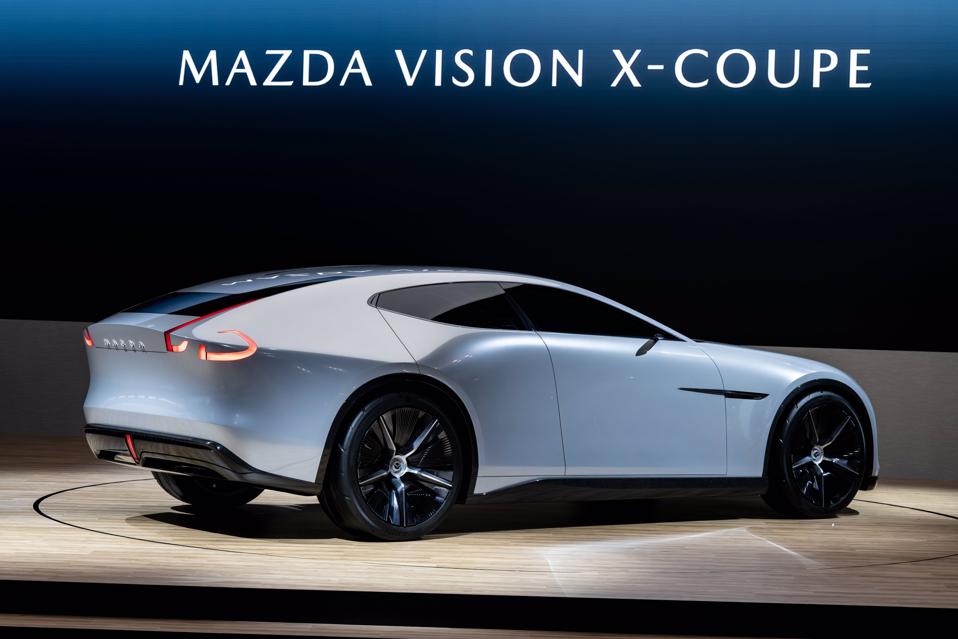Japanese auto maker Mazda has slammed industry and legislative obsessions with battery-electric vehicles for stopping the search for more creative ways to lower CO2 emissions.
The company’s Chief Financial Officer, Jeff Guyton, told the media at the Japan Mobility Show in Tokyo that renewable fuels were a viable answer to CO2 emissions from the auto industry, but that EV obsessions kept getting in the way.
The American executive argued that it was a “fundamental mistake” for governments to focus exclusively on the zero-tailpipe emissions that EVs offer rather than legislating for more realistic goals that consider whole-of-life emissions.
“If our society spent half as much time talking about biofuel as we are talking about electric vehicles, even a portion of the time we spend talking about electric vehicles…” Guyton said.
“I mean, wouldn’t it be great if we could apply a reduced carbon or carbon-neutral fuel to all those cars that are running around on the streets already? There’s more than a billion cars on the planet today,” he argued.
Guyton insisted a broadened focus that included renewable fuels could bring about faster CO2 results by dramatically lowering the emissions from the world’s existing passenger and commercial vehicle fleets, without forcing customers to buy new EVs.
“EVs are not carbon neutral, they’re just zero carbon at the tailpipe,” Guyton explained.
“The fundamental mistake we made as a society was not looking at the wheel-to-wheel energy life cycle.”
Of course, Guyton had a strong reason for talking up alternative fuels in Japan, with Mazda notable for being both an EV holdout and a biofuel pioneer.
Moving a focus to biofuels would allow automakers to keep using existing internal0-combustion motor production facilities, rather than investing billions on battery and software plants.
Mazda President and CEO Masahiro Moro insisted the microalgae absorbed CO2 while storing oils in their cells – oils Mazda extracts to refine into carbon-neutral fuel.
“In our research on microalgae, we succeeded in producing over one liter of fuel from a 11,000-liter culture tank in about two weeks,” Moro said.
“Once the fuel is extracted, the remaining microalgae is rich in nutrients, such as protein, which can be upcycled into food products or organic fertilizers.
“Now let’s talk about CO 2 capture. Exhaust from internal combustion engines contains CO2 at concentrations significantly about 350 times higher than in the atmosphere. To address this, we at Mazda developed a groundbreaking technology called ‘Mazda Mobile Carbon Capture’ that efficiently pulls CO2 directly from exhaust.
“The captured CO 2 can then be recycled to boost crop growth or to manufacture high-performance carbon materials.”
Guyton confirmed that the Mobile Carbon Capture through low-carbon fuels, which can be used in any combustion-powered vehicle and come from distilling oil from grown organisms, was Mazda’s preferred pathway to lower emissions from combustion engines, rather than what it considers to be dubious claims about EVs.
“This fuel could go in any car; it doesn’t have to go in a special Mazda engine,” Guyton insisted.
“It’s a powerful way to address the installed vehicle base.”
Mazda used the Tokyo show to launch two models: the plug-in hybrid Vision X-Coupe, with 160km of EV range and 800km of overall range. Mazda also used the reveal of the Vision X-Coupe to push its microalgae-derived, carbon-neutral fuel, complete with what it calls Mobile Carbon Capture to reduce CO2 as it is driven.
It also launched the Vision X-Compact, with a strong focus on AI at the user interface, but most attention was on the first public showing of the all-new CX-5 production SUV, with combustion and hybrid power.
Of the three, the CX-5 is clearly the most critical, as it is the biggest selling SUV Mazdda has on the books.
The third generation of the CX-5 will start life with a 2.5-liter gasoline engine and will be on sale across Europe late this year.
It will mate the 2.5-liter mtoro to a 24 Volt hybrid system, with brake-by-wire, and it delivers 104kW of power and 238Nm of torque in both front- and all-wheel drive configurations.
It also has a new, upgraded infotainment system, with either a 12.9- or 15.6-inch screen and built-in Google functionality.

